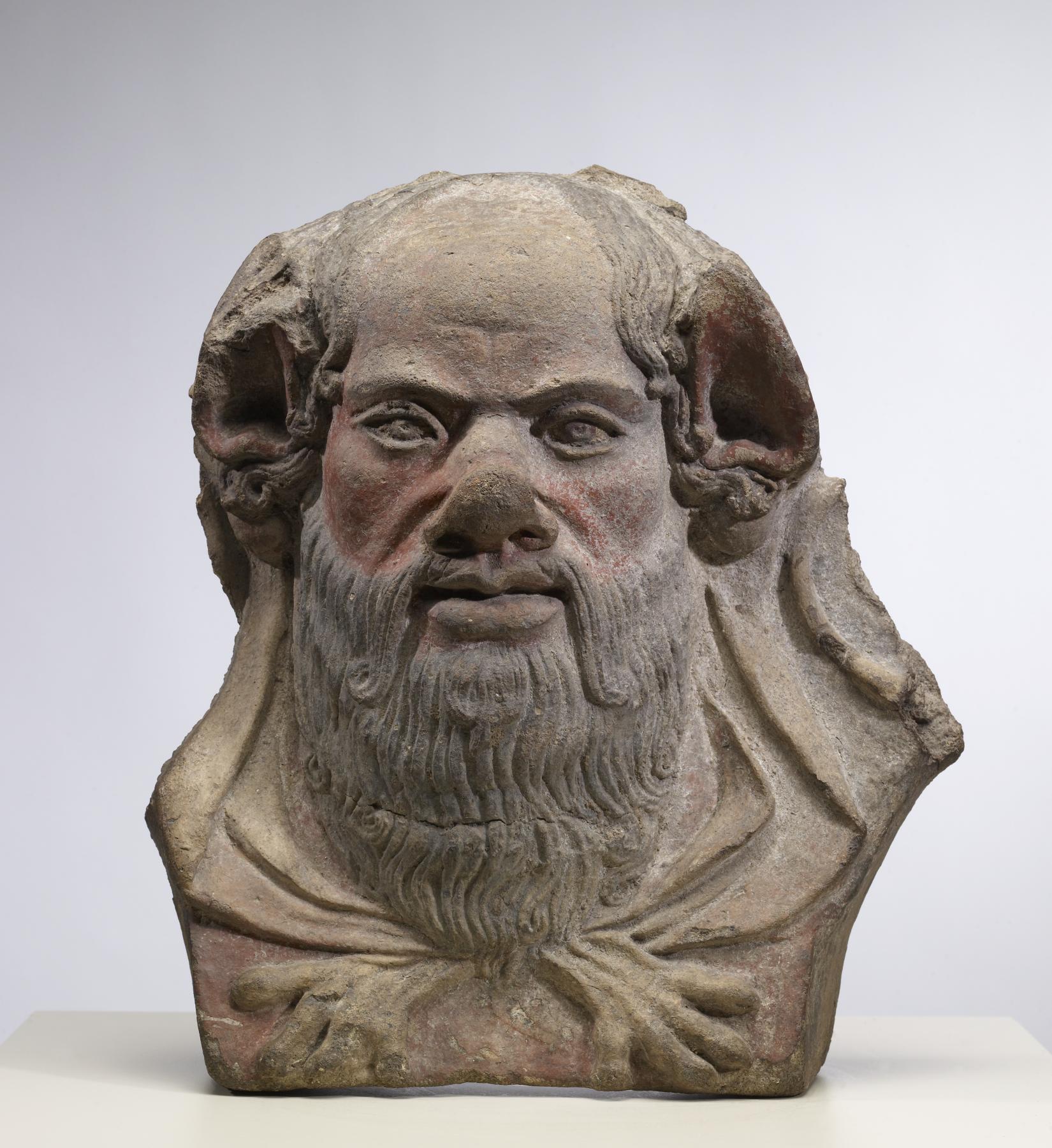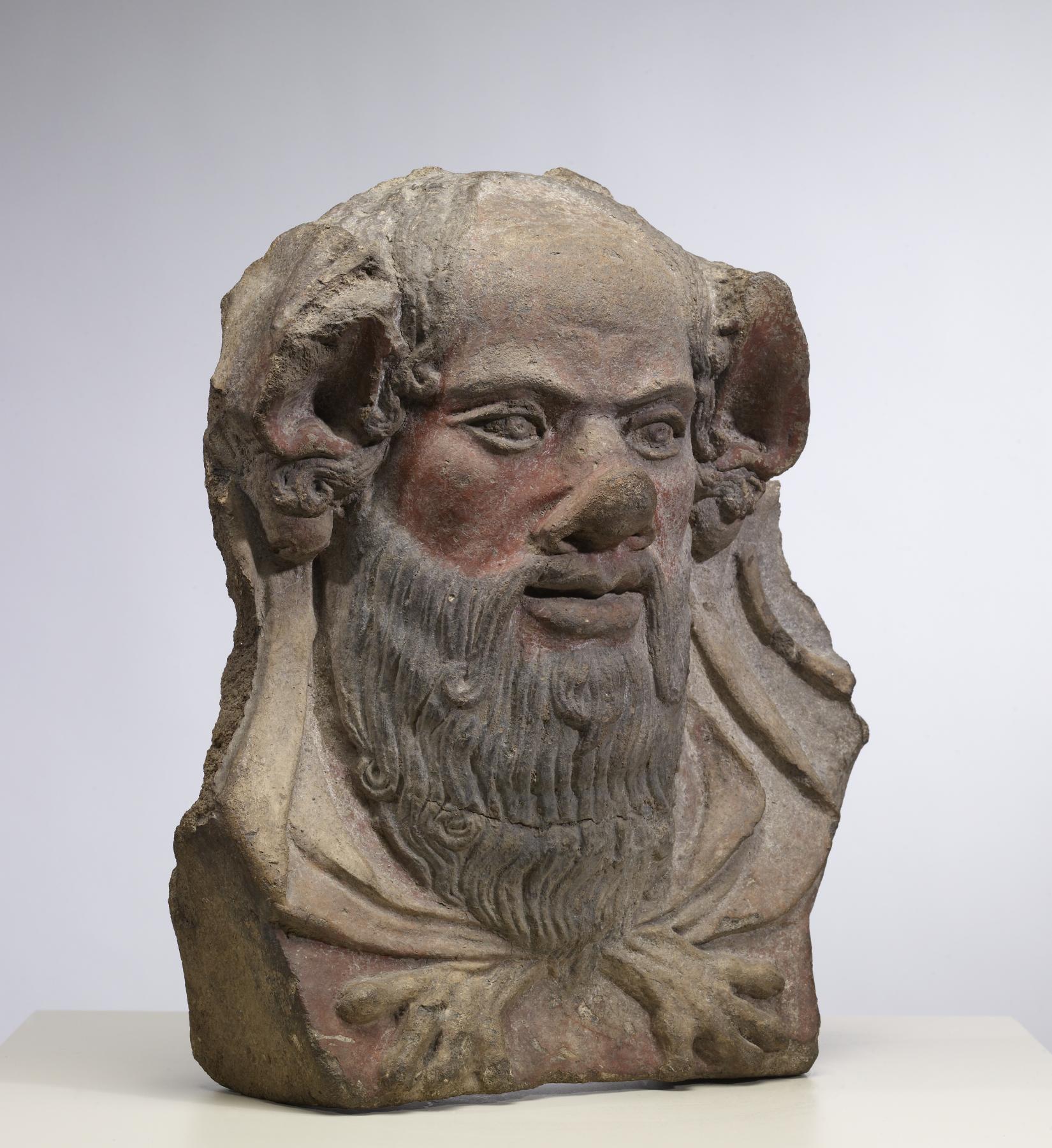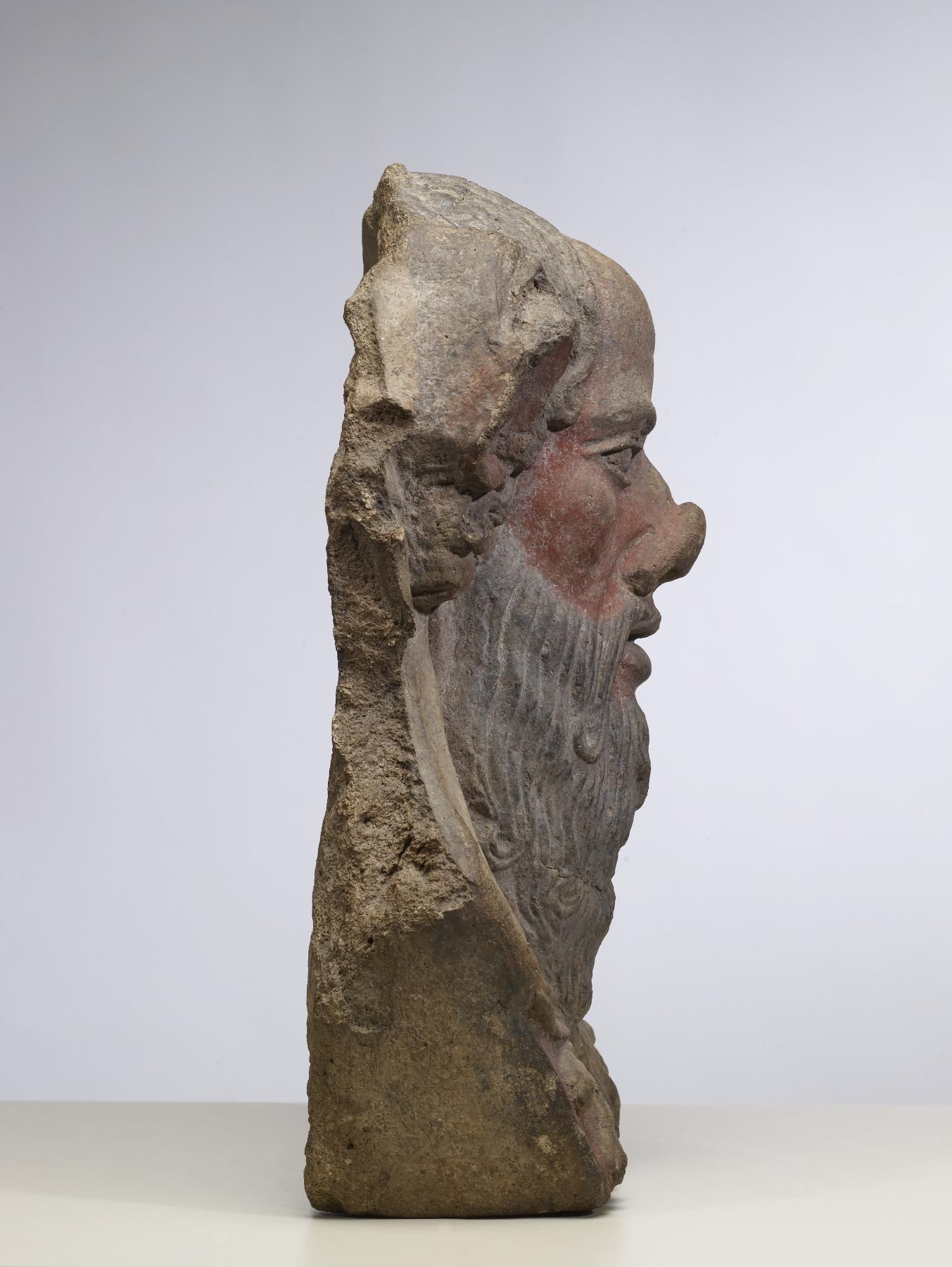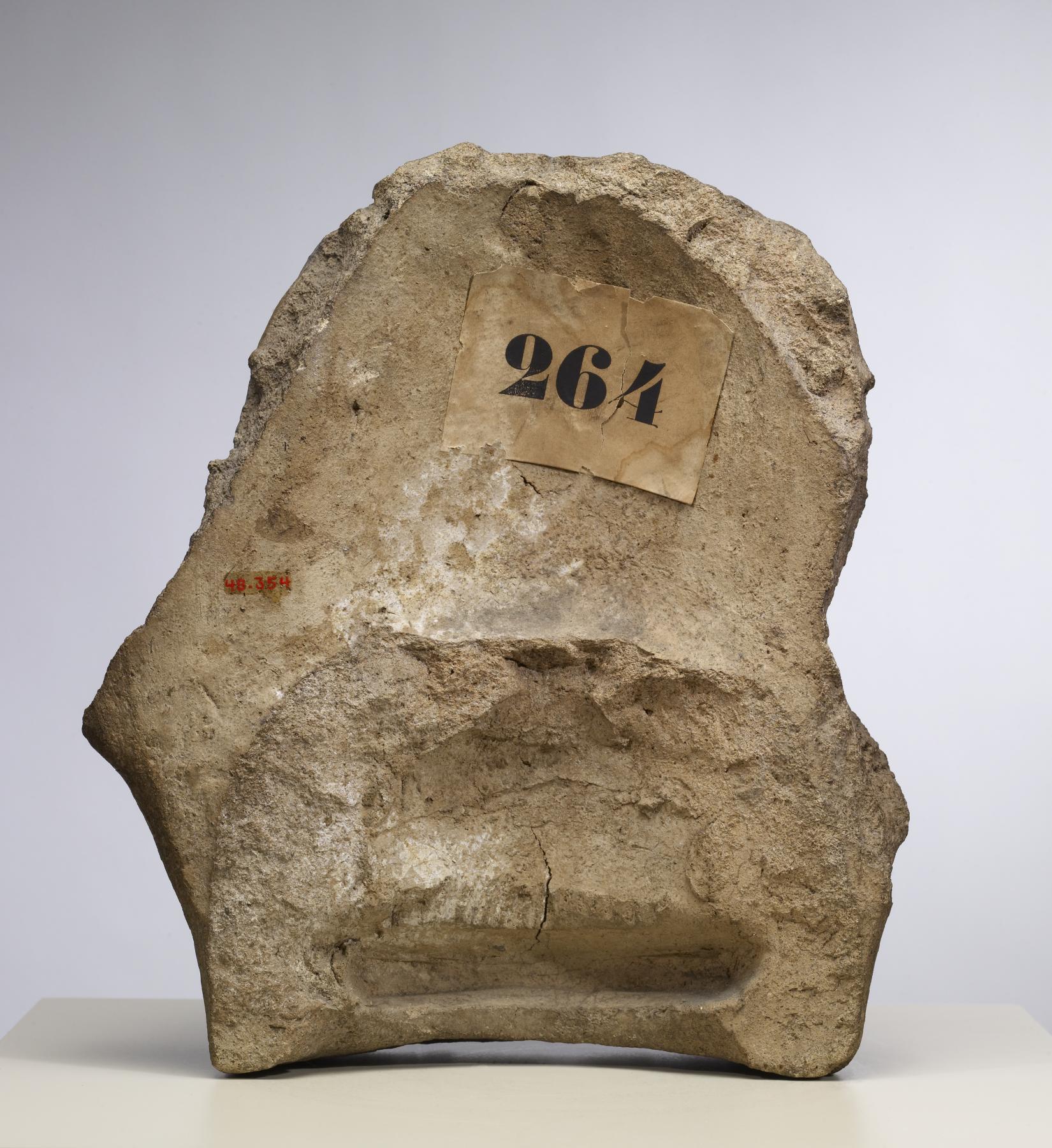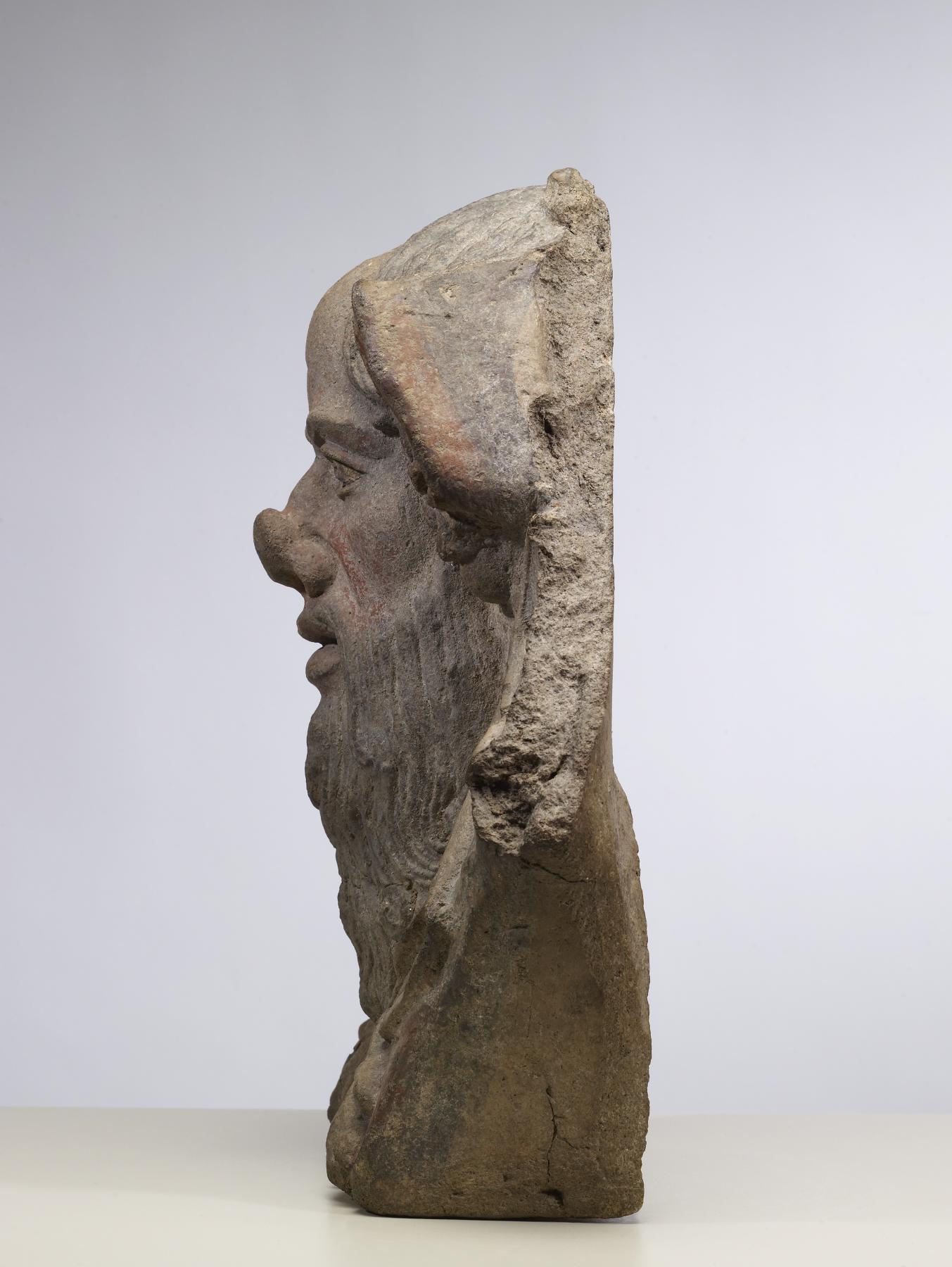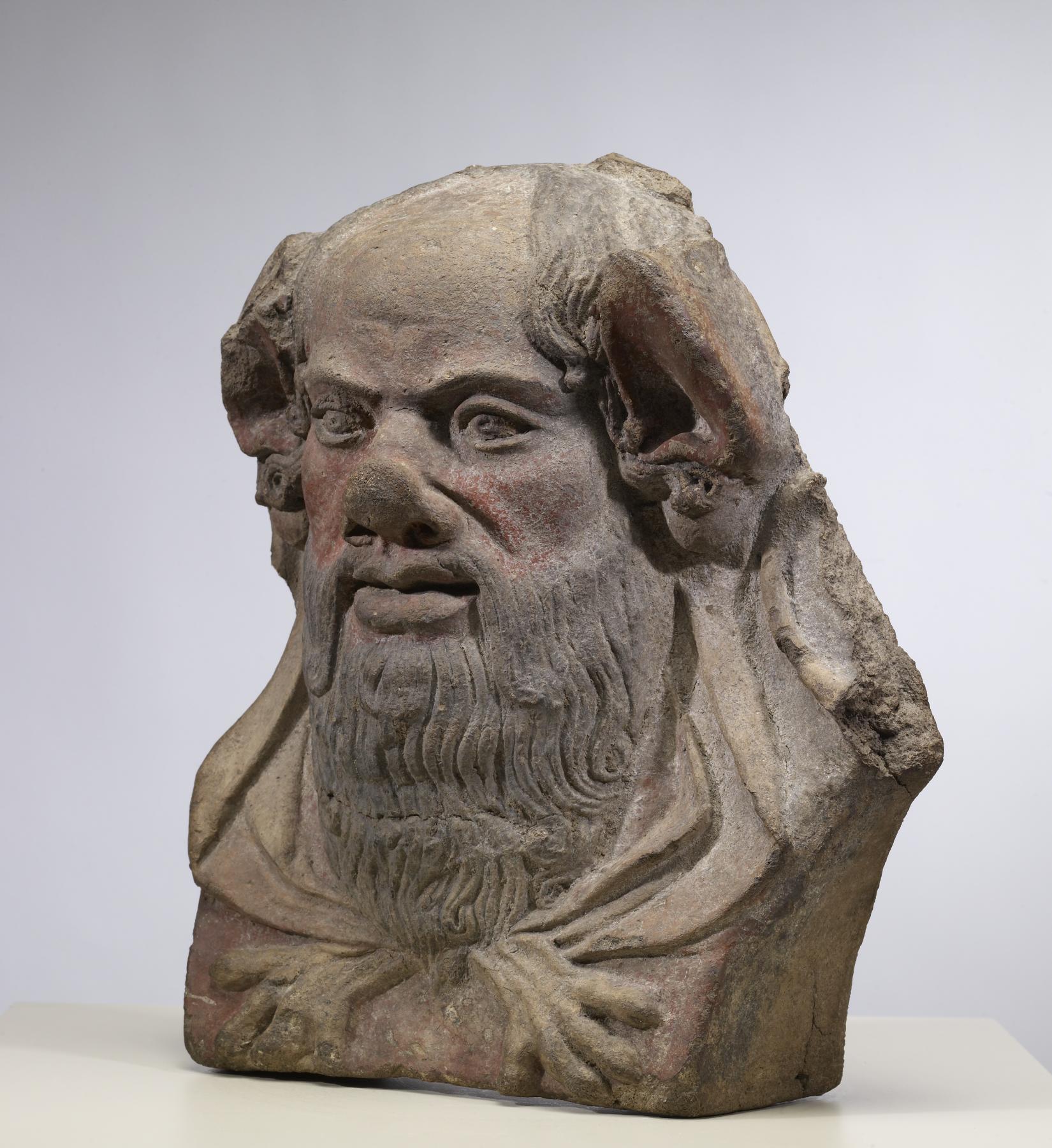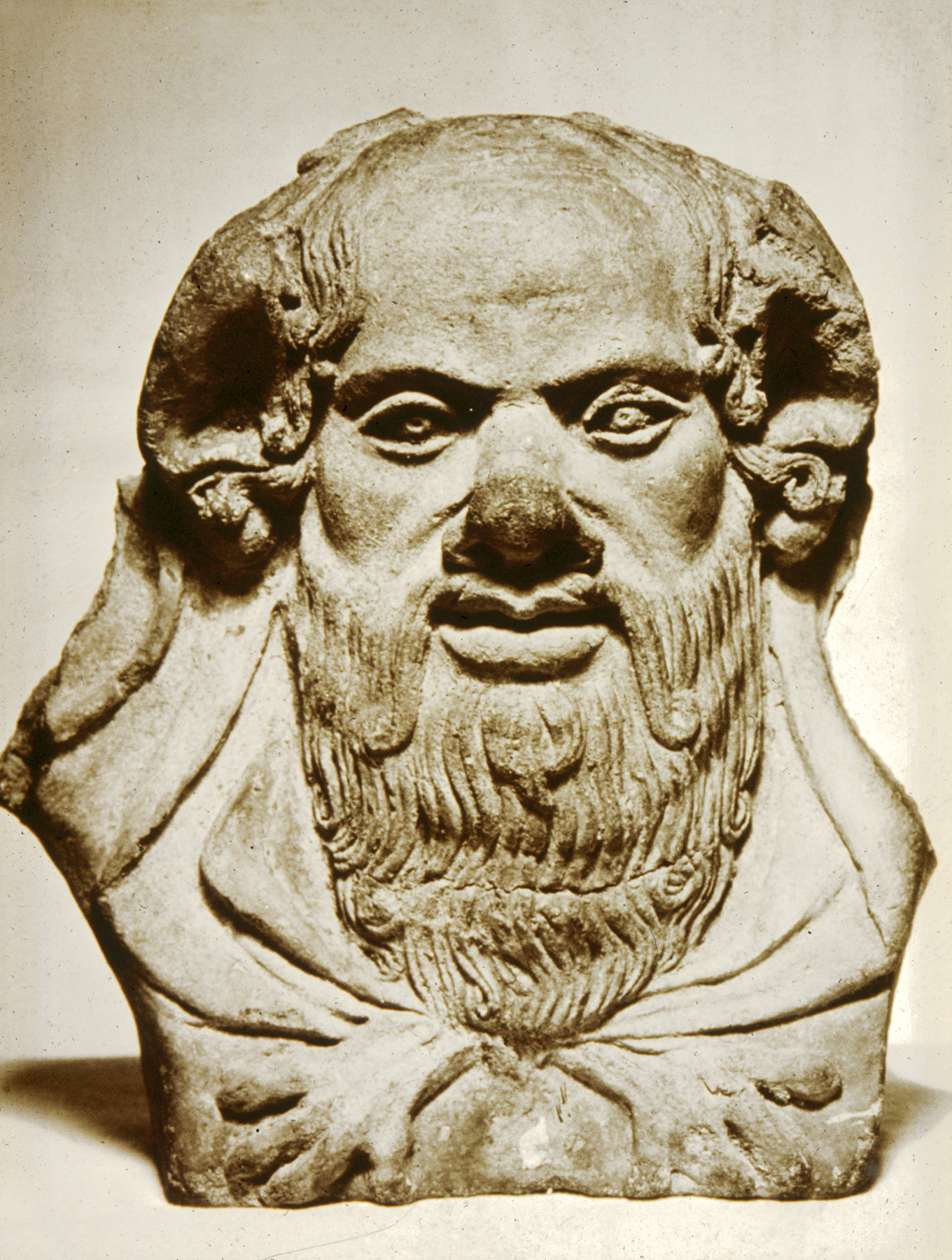Antefix with Head of Silenus
(Roman Empire )
This red fleshy face with a large bulbous nose and pointed ears belong to Silenus, a mythological creature with human and beast-like elements. A companion of Dionysus, Silenus is cloaked here in a white animal skin with the paws tied at the throat. His equine ears contrast to his otherwise human facial features. His balding head is framed on either side by curling black tendrils that meet the full, long beard set around his parted lips.
The roofs of Etruscan temples were highly decorated. This representation of Silenus was part of an antefix, a decorative tile that was utilized at the eaves and central ridge of a roof in classical architecture. Standing almost perpendicular to the adjoining roof tile, this antefix was likely circled by a plaque shaped like a clam shell that may have had decoration in relief, such as palmettes or lotus flowers, and was painted red, white, blue, and black. Such architectural ornaments were made in molds, allowing for artisans to produce multiple identical antefixes to adorn the temple’s roof.
Provenance
Provenance (from the French provenir, 'to come from/forth') is the chronology of the ownership, custody, or location of a historical object. Learn more about provenance at the Walters.
Don Marcello Massarenti Collection, Rome [date and mode of acquisition unknown]; Henry Walters, Baltimore, 1902, by purchase; Walters Art Museum, 1931, by bequest.
Conservation
| Date | Description | Narrative |
|---|---|---|
| 10/29/1974 | Treatment | cleaned |
Geographies
Italy, Cerveteri (Place of Origin)
Measurements
H: 12 5/8 x W: 11 13/16 x D: 4 5/16 in. (32 x 30 x 11 cm)
Credit Line
Acquired by Henry Walters with the Massarenti Collection, 1902
Location in Museum
Accession Number
In libraries, galleries, museums, and archives, an accession number is a unique identifier assigned to each object in the collection.
In libraries, galleries, museums, and archives, an accession number is a unique identifier assigned to each object in the collection.
48.354

